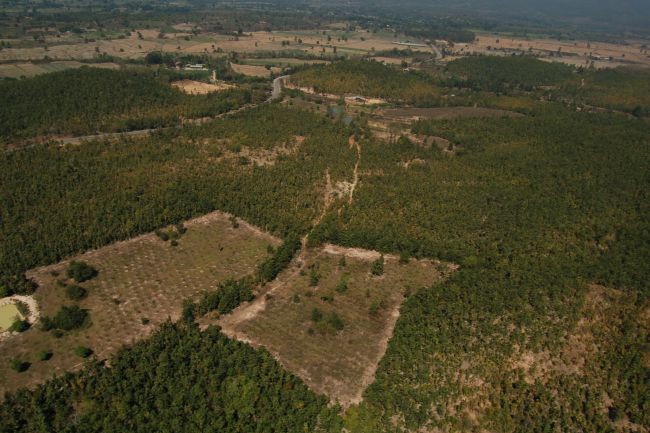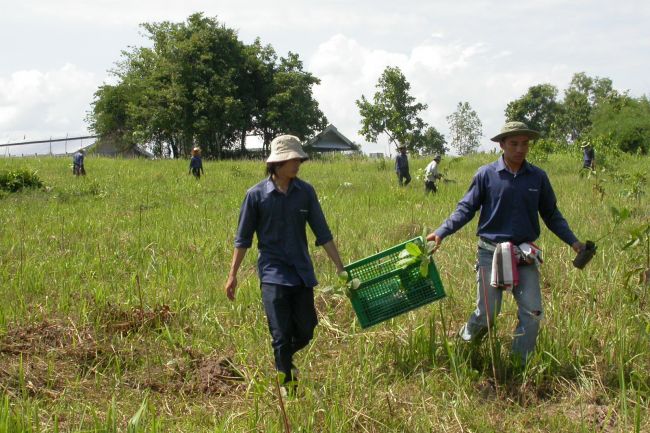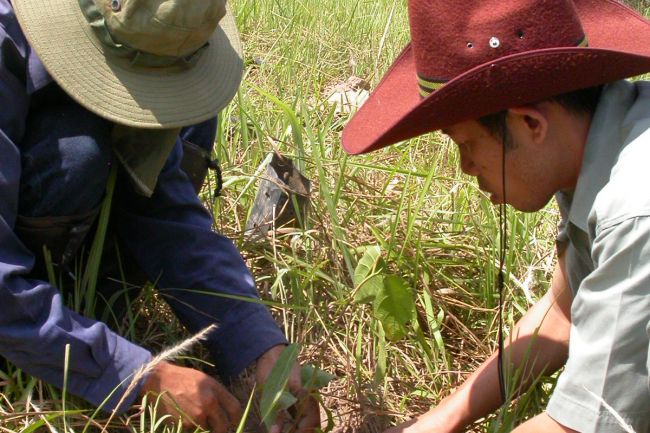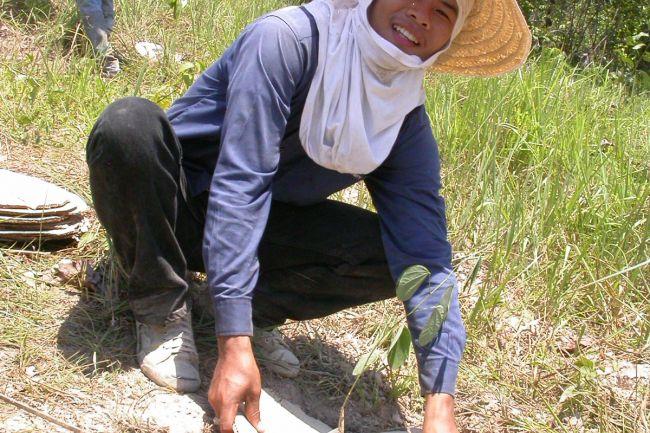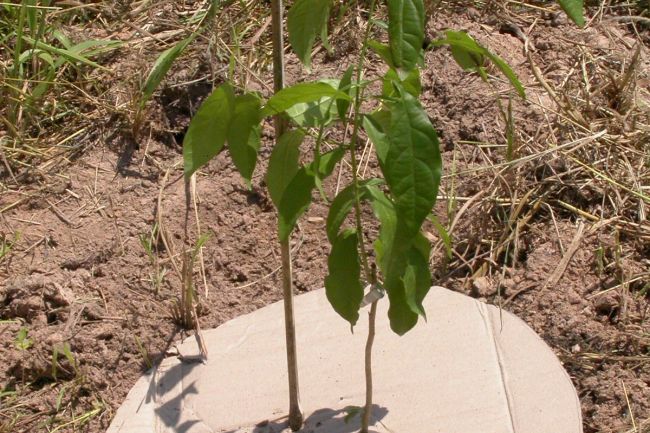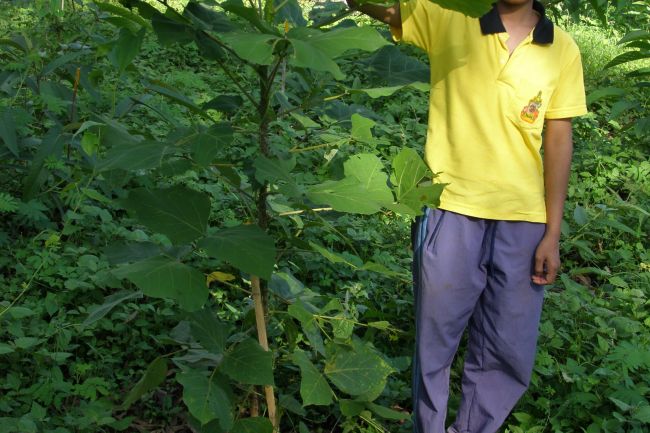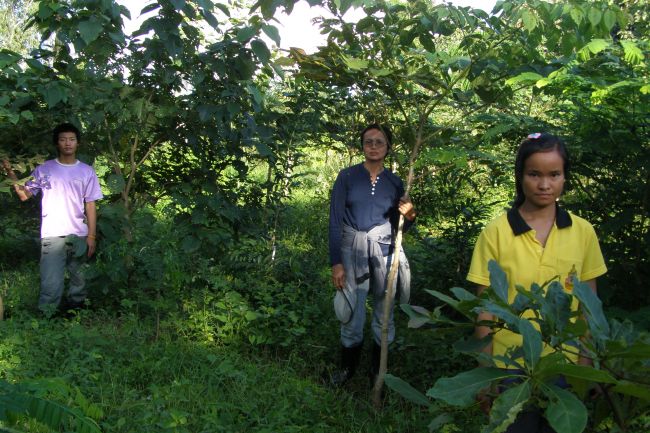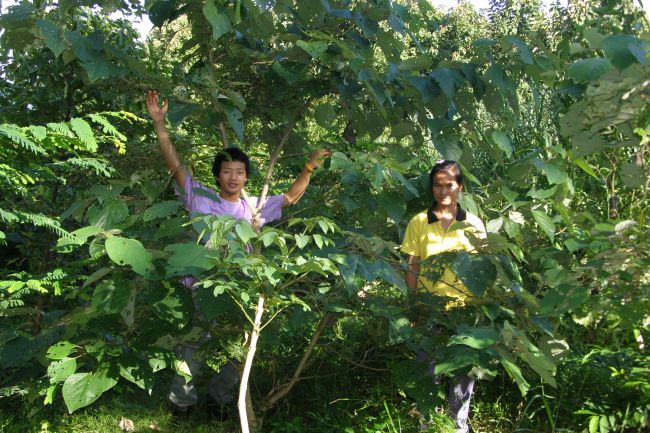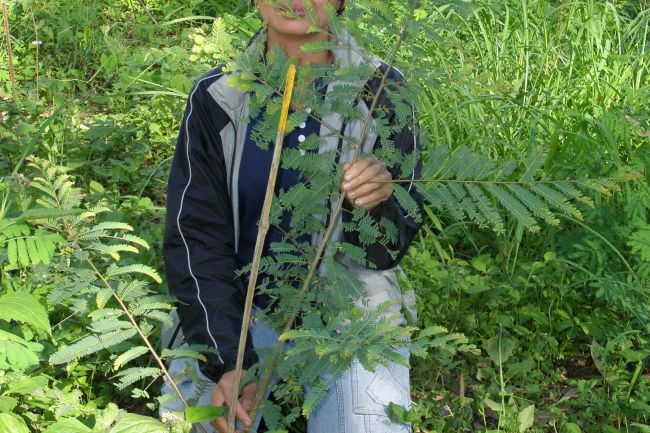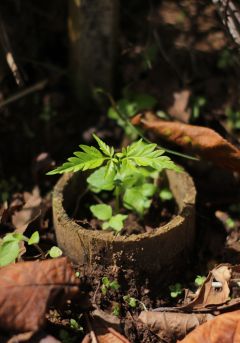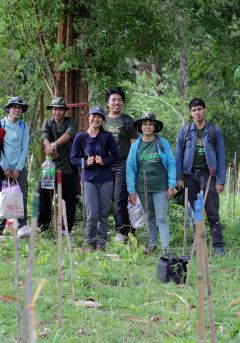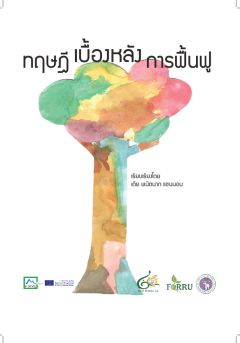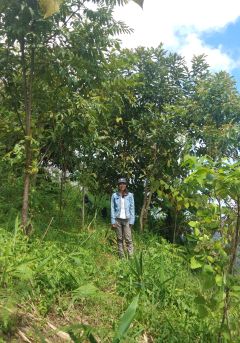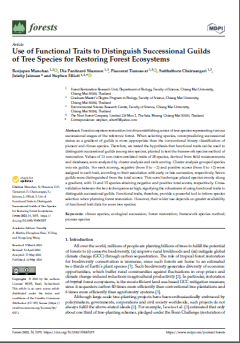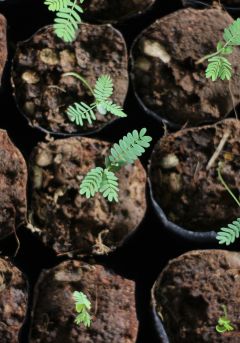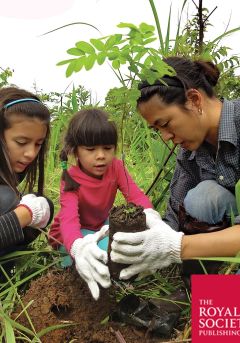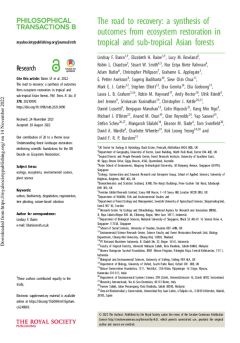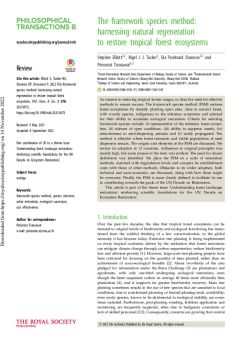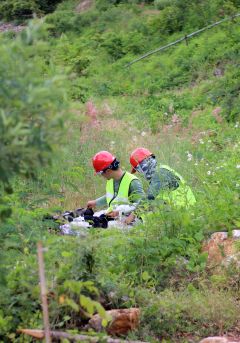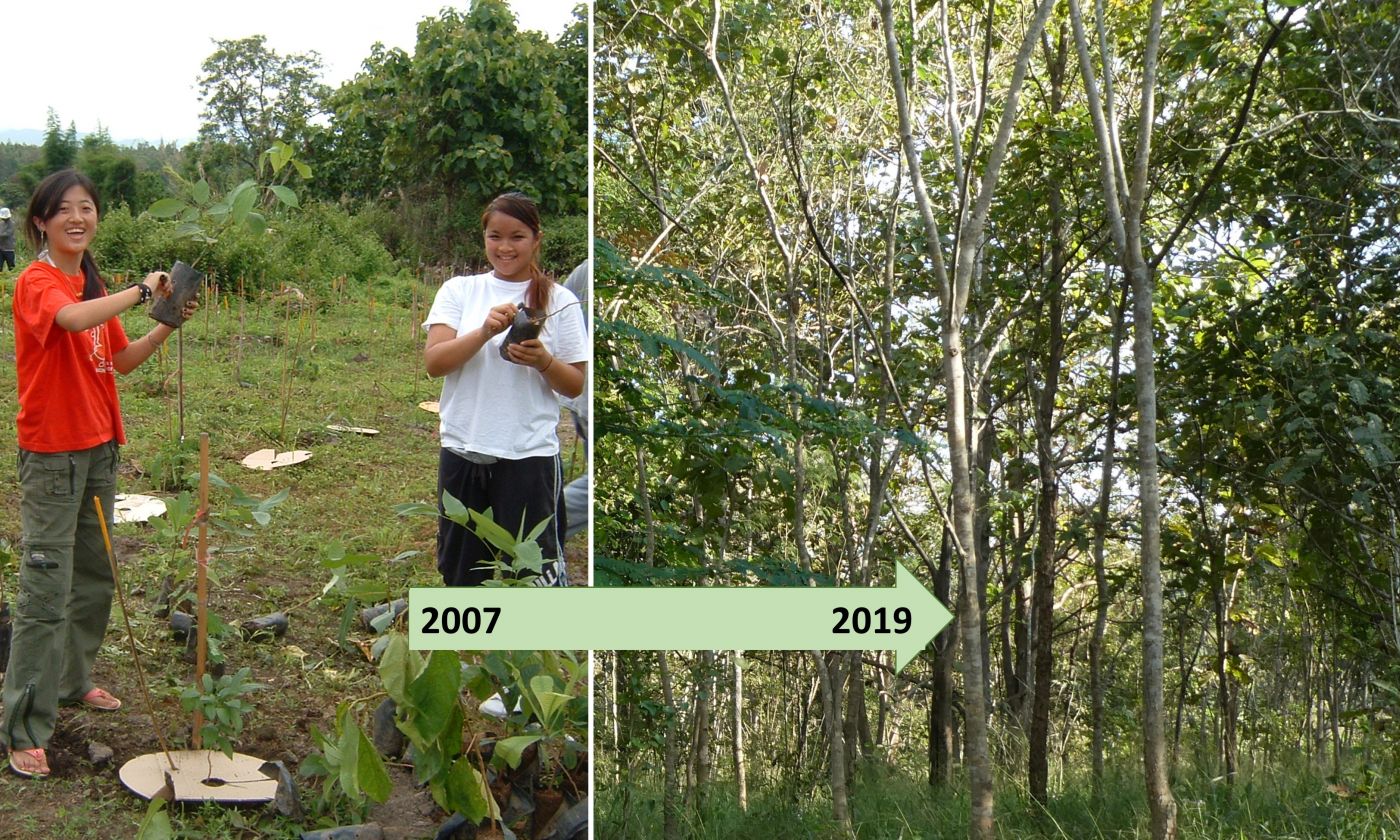
This project established field trials, to determine the success of forest restoration of lowland deciduous forest, using the framework species method. The project supported two tree nurseries (located in Chiang Mai and Phrae Provinces), which not only served as research labs, but also produced thousands of trees to local communities for planting in lowland forest areas. Germination trials determined the most effective techniques to propagate potential framework tree species for deciduous forests. The trees were planted on 8 rai: 4 rai at the Phrae Campus of Mae Jo University and 4 rai at Huay Tung Tao. These plots tested the field performance of 15 tree species and 4 fertilizer/compost application treatments to ameliorate poor soil conditions.
Monitoring results at the end of the first rainy season indicated that good survival and growth rates were achieved. Initial indications were that more intensive treatments (compost in the planting holes and high rates of fertilizer application) achieved the best results.
Combining results with previous experiments, enabled the identification of the top 10 most suitable species for restoration of deciduous forests: Eugenia fruticosa (DC.) Roxb., Ficus glaberrima Bl. var. glaberrima, Careya arborea Roxb., Actinodaphne henryi Gamb., Ficus fistulosa Reinw. ex Bl. var. fistulosa, Ficus racemosa L. var. racemosa, Terminalia chebula Retz. var. chebula, Terminalia bellirica (Gaertn.) Roxb., Ficus rumphii Bl. and Phyllanthus emblica L.
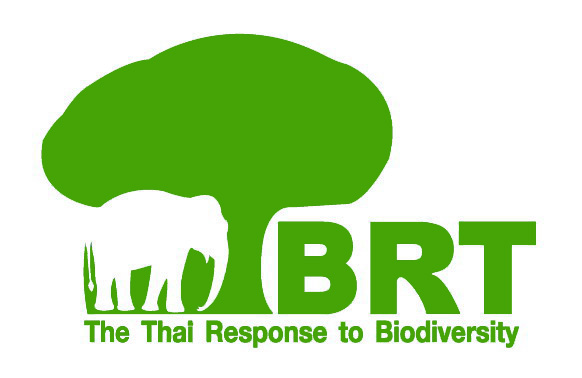 For detailed results please access the final project report (including tree performance data) via the download panel.
For detailed results please access the final project report (including tree performance data) via the download panel.
This project was sponsored by The Biodiversity Research and Training Program (BRT)
Field Performance of Planted Trees
Monitoring is essential for adaptive management. Click here to learn how to measure tree survival and growth and find out if your restoration plan is working.
Tree Planting & Maintenance
How to plant trees and care for them afterwards. Fertilizer application, weeding and mulching.
1: Selecting suitable tree species for direct seeding to restore forest ecosystems in northern Thailand
ABSTRACT: To upscale restoration of tropical forest ecosystems, direct seeding—sowing seeds directly into the ground—is potentially more cost-effective than tree planting. However, its success is...
2: Developing Techniques for Direct-seeding for Forest Restoration in Northern Thailand
ABSTRACT: Forest restoration by direct seeding is potentially more cost-effective than tree-planting, especially for upscaling restoration of tropical forest ecosystems. Unfortunately, its success...
3: ทฤษฎีเบื้องหลังการฟื้นฟู
หนังสือเล่มนี้ได้รวบรวมเนื้อหาครอบคลุมถึงการรบกวนที่ส่งผลต่อกระบวนการฟื้นตัวของธรรมชาติ ทำให้มวลชีวภาพลดลงและสภาพดินเปลี่ยนแปลงไป...
4: Differential seed removal, germination and seedling growth as determinants of species suitability for forest restoration by direct seeding – A case study from northern Thailand
ABSTRACT: Direct seeding is potentially a more cost-effective alternative to conventional tree planting for restoring tropical forest ecosystems. However, seed loss, due to removal and damage by...
5: Use of functional traits to distinguish successional guilds of tree species for restoring forest ecosystems
ABSTRACT: Forest ecosystem restoration involves establishing mixes of tree species representing various successional stages of the reference forest. When selecting species, conceptualizing...
6: Effects of fertilizer on growth and biomass allocation of three evergreen tree species from seasonally dry tropical forests
ABSTRACT: Tree planting is widely accepted as a strategy to mitigate climate change, with a strong focus on use of native tree species. Various kinds of fertilizer have been recommended, to...
7: Understanding forest landscape restoration: reinforcing scientific foundations for the UN Decade on Ecosystem Restoration
Under the United Nations Decade on Ecosystem Restoration, 2021-2030, there has been no more critical or opportune time to restore forests, which are critical for the world’s species, people and...
8: The road to recovery: a synthesis of outcomes from ecosystem restoration in tropical and sub-tropical Asian forests
Abstract: Current policy is driving renewed impetus to restore forests to return ecological function, protect species, sequester carbon and secure livelihoods. Here we assess the contribution of...
9: The framework species method—harnessing natural regeneration to restore tropical forest ecosystems
Abstract: The framework species method (FSM) restores forest ecosystems by densely planting open sites, close to natural forest, with a group of woody species, characteristic of the reference...
10: Use of Unmanned Aerial Vehicle (UAV) Imagery to Monitor Progress of Early Forest Ecosystem Restoration in an Opencast Mine
ABSTRACT: Monitoring forest restoration is essential for improving and advancing restoration techniques, but human-based monitoring is costly as it requires intensive labour in the field. Although...

